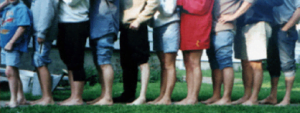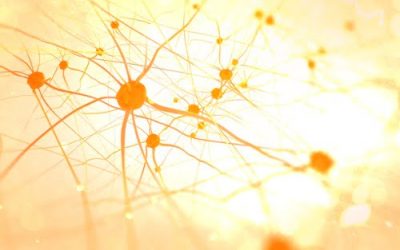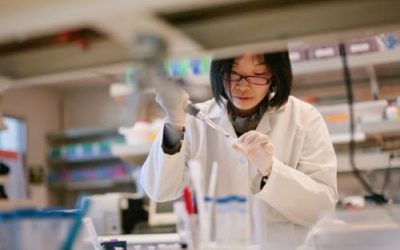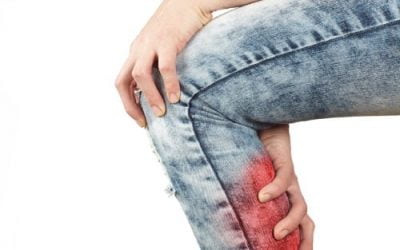 FLORIAN P THOMAS, MD, PHD, DIRECTOR, HEREDITARY NEUROPATHY CENTER OF EXCELLENCE; CHAIR, DEPARTMENT OF NEUROLOGY & NEUROSCIENCE INSTITUTE; HACKENSACK UNIVERSITY MEDICAL CENTER & HACKENSACK MERIDIAN SCHOOL OF MEDICINE
FLORIAN P THOMAS, MD, PHD, DIRECTOR, HEREDITARY NEUROPATHY CENTER OF EXCELLENCE; CHAIR, DEPARTMENT OF NEUROLOGY & NEUROSCIENCE INSTITUTE; HACKENSACK UNIVERSITY MEDICAL CENTER & HACKENSACK MERIDIAN SCHOOL OF MEDICINE
When in 1998 I met a large, five-generation family with hereditary neuropathy, little did I know that this would lead to a research effort now entering its third decade. A pattern emerged among the over 15 affected relatives: While their clinical presentation was one of typical CMT, their electrical studies did not fit the neat distinction of demyelinating CMT1 with slow conduction speeds and axonal CMT2 with near normal speeds, but were smack in the middle, i.e. intermediate. At the time, only a handful of genetic tests were commercially available and they came back normal. So did this family have a novel subtype of CMT?
Around that time, at a scientific neuropathy meeting,I met the leaders of a renowned genetics group at the University of Antwerp, Belgium. The prospect of a novel CMT subtype piqued their interest and they offered to work with me identify the genetics in this family.
It so happened that this group had become aware of another large family, this one from Bulgaria, whose member resembled the US family in also having intermediate conduction velocities. Fast forward three years: In 2003 the American Journal of Human Genetics published our finding of a region on chromosome 1 which seemed to harbor a gene (as yet unknown) that was linked to having CMT in both families. Fast forward another three years: In 2006, Nature Genetics reported our discovery of the responsible mutations in a gene called YARS in humans & TyrRS in rodents. In 2016 and 2019, we reported a description of the clinical subtype, dubbed dominant intermediated CMT type C (DI-CMT C).
It was a surprise. The gene encodes a “housekeeping protein” called tRNA synthetase, which every cell uses for the basic function of linking the building blocks of proteins. How could a mutation in such gene only affect nerves? I had looked for problems in other organ systems than nerves in my patients, but found none. Our findings suggested that this protein played a role in axonal growth, which seemed to makes sense for a neuropathy. But how? In general, gene mutations cause disease through one or more than mechanisms: If the mutated protein no longer does its job, that can damage cells and organs. Or, a mutated protein can assume a new different function which can poison cells. We looked at two additional regions in YARS that are separate from the housekeeping function, one of which resembles a protein involved in inflammation, and another which promotes growth of blood vessels. It turns out we were barking up the wrong tree: There was no evidence that these parts of the protein were responsible for the neuropathy. This was frustrating, but by 2009 progress was made on a related project. When YARS was mutated in fruit flies (drosophila), it caused a neuropathy which prevented them from flying up when startled. So that made sense.
Yet it took another 10 years till a collaboration between folks at University of Antwerp and Scripps Research in California hit pay dirt. In a study just published in Nature Communications we show that the YARS mutations in our families makes the protein toxic when cells are under stress. When cells are “happy” (so to speak), YARS protein is in what is called the cytoplasm, the compartment where cells. break down carbohydrates or lipids to produce energy, make proteins that contract in muscle cells or neurotransmitters in nerve cells. But when cells are under stress, YARS protein moves into the nucleus where it impacts which genes become activated. It turns out that the mutated YARS protein that is linked to neuropathy in both humans & fruit flies, functions differently from the normal version when inside the nucleus, and significantly changes how the cell works. And when in the fruit fly the mutated YARS is blocked from entering the nucleus, neuropathy does NOT develop. So have we cracked the case?
The answer is ‘maybe’. It turns out that our colleagues at Scripps & in Antwerp found that a known agent, Embelin, in common use for centuries in the Indian medical tradition, prevents the YARS protein from entering the nucleus and rescues the development of neuropathy in the fruit fly. Embelin is extracted from Embelia berries which are remotely related to cranberries, persimmon, blueberries, brazil nuts and scarlet pimpernels.
This discovery is not only exciting for people with DI-CMT C. Mutations in several other tRNA synthetases are also linked to CMT. At this point we don’t know if similar disease mechanisms are active in those subtypes. Time and a lot of work will tell. Hopefully this will take fewer than 10 years. And such for such efforts to be successful, we depend on the enthusiastic support of families with CMT. For that I am grateful.
REFERENCES
- Jordanova A, Thomas FP, Guergueltcheva V, et al. Dominant intermediate CMT type C maps to chromosome 1p34-p35. Am J Hum Gen 2003;73:1423-30
- Jordanova A, Irobi J, Thomas FP, et al. Disrupted function and axonal distribution of mutant tyrosyl-tRNA synthetase associated with dominant intermediate CMT neuropathy. Nature Genetics 2006;38:197-202
- Storkebaum E. Leitão-Gonçalves R, Godenschwege T, et al. Dominant mutations in the tyrosyl-tRNA synthetase gene recapitulate in Drosophila features of human CMT neuropathy. PNAS 2009;106:11782–7
- Thomas FP, Guergueltcheva V, Gondim FAA, et al. Clinical, neurophysiological and morphological study of dominant intermediate CMT neuropathy type C. J Neurol 2016;263:467-76
- Pan Y, Kafaie J, Thomas FP. Prospective 16-year longitudinal study of dominant intermediate CMT type C neuropathy. Muscle & Nerve 2019; doi.org/10.1002/ mus.26724
- Bervoets B, Wei N, Erfurth ML, et al. Transcriptional dysregulation by a nucleus-localized aminoacyl-tRNA synthetase associated with CMT neuropathy. Nat Commun 2019;10: doi:10.1038/s41467-019-12909-9









Hello my son is 10 and has a YARS gene of VUS. He has a lot of issues that seem related to CMT. My MIL was diagnosed with CMT after a nerve conduction and some other stuff but no genetic testing. So we decided to test my husband who had symptoms he has the YARS gene also now we are working to test my MIL. As she is the most severe. We also found out she has a lot of cousins and my husband sister and her son also have some neuropathy and issues that may also be related to this. We are waiting for my MIL test to tell them and see if they would want to talk with Their drs for testing. If u have a study we would be willing to summit what you need and be apart of it also
Thank you for your offer, Jessica! The best way for us to study and capture your family data for future studies is by joining our Global Registry for Inherited Neuropathies (GRIN). We encourage your husband and MIL to complete the Natural History Study survey on the page below so that we can efficiently include your family in our research. https://www.hnf-cure.org/registry/